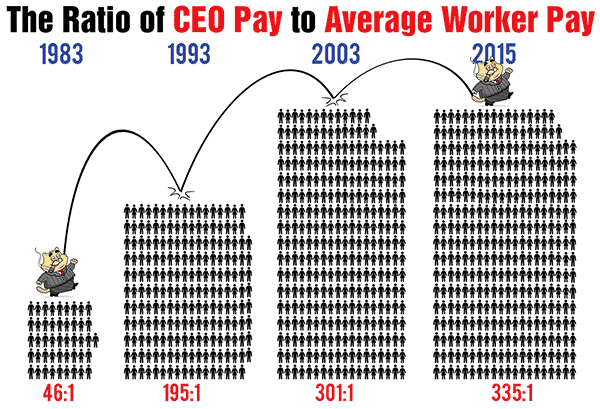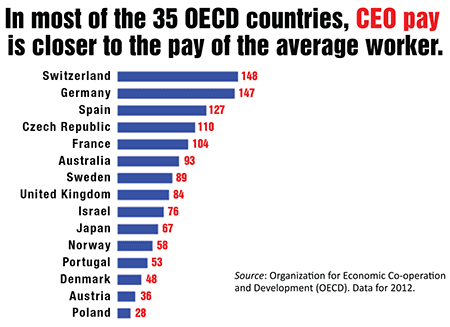Search News
For the Media
For media inquiries, call CWA Communications at 202-434-1168 or email comms@cwa-union.org. To read about CWA Members, Leadership or Industries, visit our About page.
What Do Working Families Want? A Fair Shake
Corporations Are Putting the Squeeze on Working Families
 From tax breaks to soaring compensation packages, corporations are looking forward to another “Gilded Age,” where they call the shots and control the economy.
From tax breaks to soaring compensation packages, corporations are looking forward to another “Gilded Age,” where they call the shots and control the economy.
The Trump tax plan proposes giving the top 1 percent of earners 47 percent of the total tax cuts and would set a new 15 percent top corporate tax rate. The Trump plan even would cut the rate that hedge fund managers pay from 23.8 percent to 15 percent.
House Speaker Paul Ryan is trying to do one better. He wants to give 76 percent of total tax cuts to the 1 percent, 47 percent of that going to the richest one-tenth of 1 percent. That’s an average tax cut of at least $1.1 million to the richest one-tenth of 1 percent.
Other pledges help Wall Street at the expense of the rest of us, including getting rid of the Dodd-Frank law that reined in the Big Banks following the 2007-2008 financial crisis.
Other items on the Wall Street wish list that would hurt working families: the privatization of Medicare, a rollback of overtime pay rules, and a stepped up attack on public and private sector workers’ bargaining rights.
We won’t let everything we’ve worked for be taken away. We’re fighting back, for our jobs and our communities.
CEOs Versus Everyone Else
 The pay chart shows how CEO compensation in the United States has skyrocketed over the past three decades, especially compared to the wages of average workers. That’s not the case in nearly every other industrial democracy. Compare the pay chart (right) with the earnings of U.S. CEOs.
The pay chart shows how CEO compensation in the United States has skyrocketed over the past three decades, especially compared to the wages of average workers. That’s not the case in nearly every other industrial democracy. Compare the pay chart (right) with the earnings of U.S. CEOs.
The “financialization” strategy that corporate and wealthy interests use to keep their earnings up and push workers’ pay down has meant that that CEO compensation is up nearly 1000 percent above its 1978 level. Despite the 2000 fall in the stock market and the 2007-2008 Great Recession, CEO pay remains off the charts, even when compared to the earnings of the top one-tenth of 1 percent.
From 1978-2014:
- Growth of CEO compensation – 1000 percent
- Growth of the stock market – 542.9 percent
- Growth in earnings of the top one-tenth of 1 percent – 320.5 percent
What about workers’ pay? The Bureau of Labor Statistics reported that average wages rose 2.8 percent from October 2015 to October 2016. That’s a start. It’s the first improvement in real wages – wages adjusted for inflation – that workers have seen in decades.